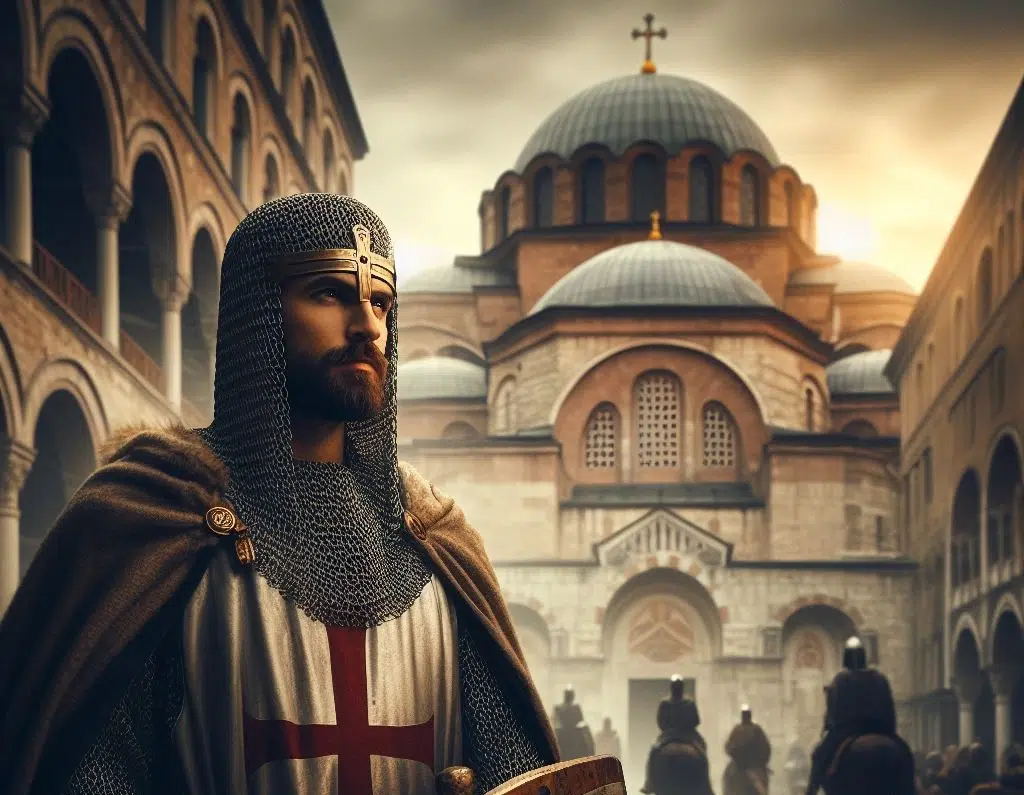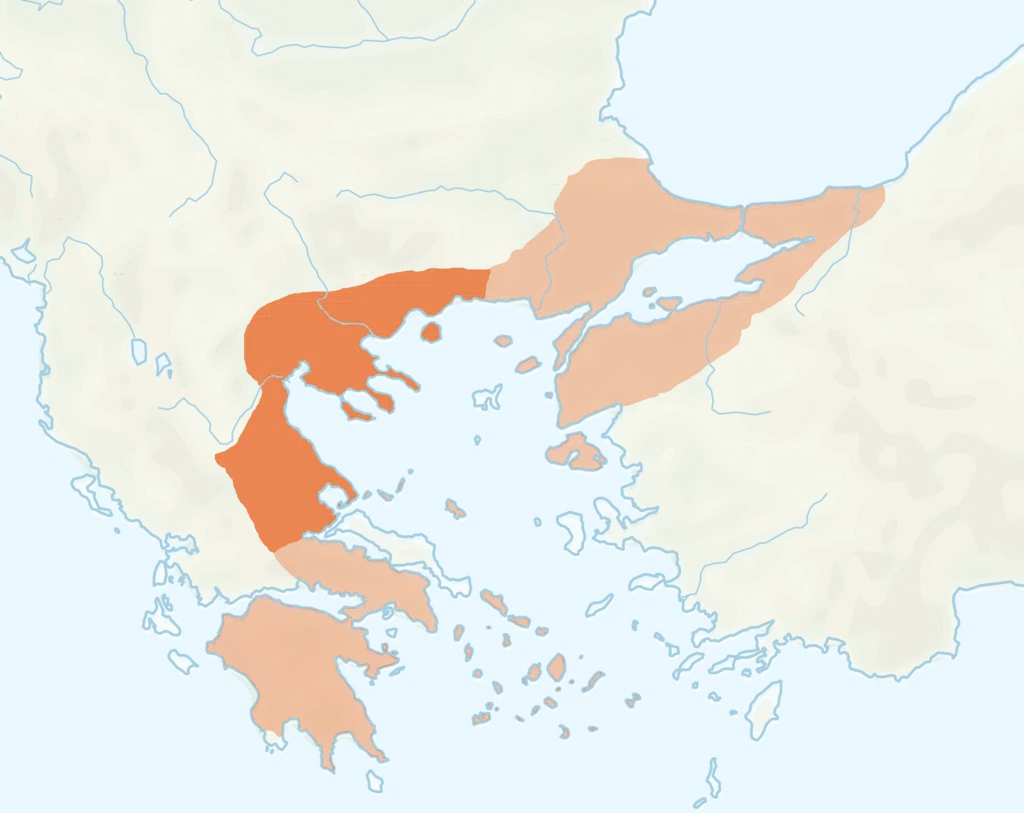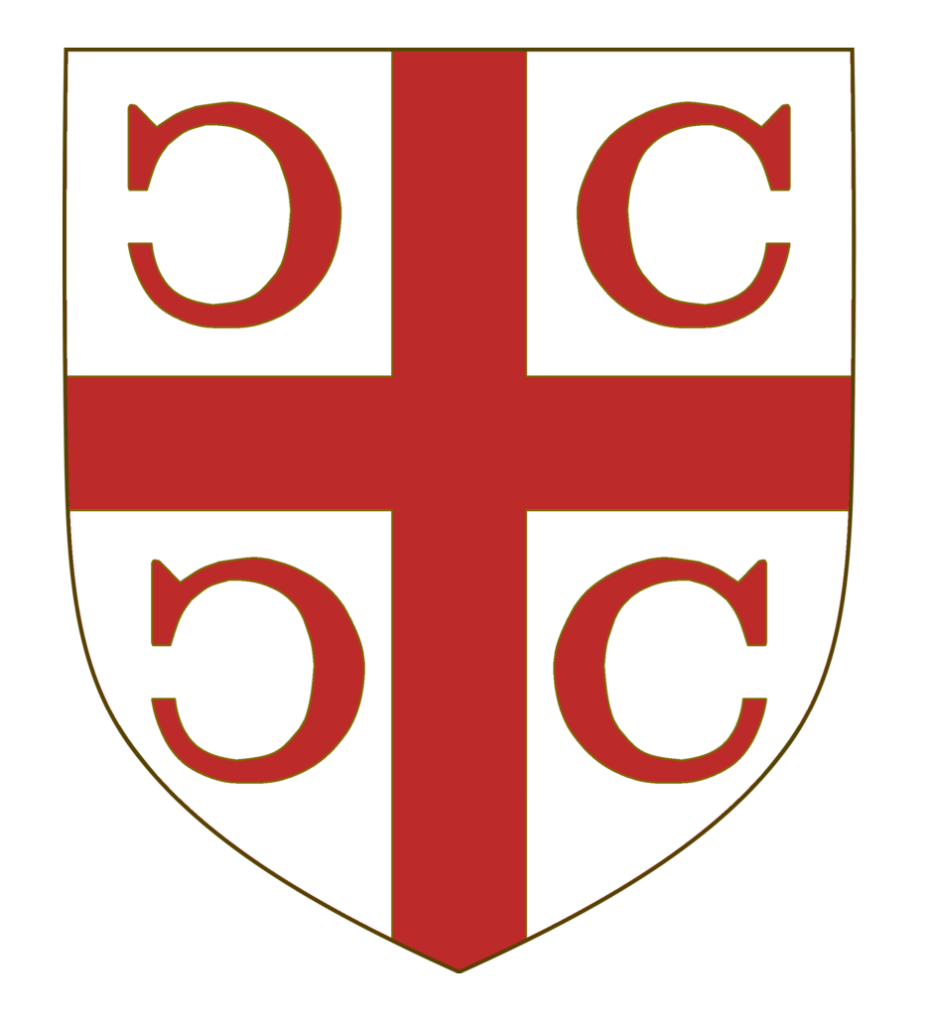
In the turbulent years following the conquest of Constantinople in 1204 during the Fourth Crusade, a number of newly-born Latin and Byzantine Greek states emerged. These states were established to fill the power vacuum left by the shattered and tired Eastern Roman Empire, known today as the Byzantine Empire.
Among these new states was the Kingdom of Thessalonica, a short-lived but significant realm in the broader Greek region that had bold aspirations and goals. The aim of this kingdom was to restore the Byzantine Empire from its base in Northern Greece.
Ruled by Boniface of Montferrat and his successors, the Kingdom of Thessalonica played a very significant role in the politics of 13th-century Greece before its final collapse a few years later.
Origins and establishment of the Kingdom of Thessalonica
The Kingdom of Thessalonica finds its origins in the aftermath of the Fourth Crusade. In 1204, the Latin Crusaders captured and tragically sacked Constantinople, the capital of the Byzantine Empire. Following this devastating event, the Crusaders divided up the territories of the empire among themselves.
The first state that was created originated from the establishment of the Latin Empire of Constantinople. Apart from this creation at the heart of the former empire, the Crusaders also established several other vassal states in the conquered Byzantine lands. One of these was the Kingdom of Thessalonica, founded by Boniface of Montferrat, a prominent leader of the crusade.
Boniface crowned himself King of Thessalonica in 1204 and ruled the kingdom as a vassal state of the broader Latin Empire. The kingdom was centered on the strategically important city of Thessalonica (modern-day Thessaloniki), which had been a major political, economic, and cultural hub in the Byzantine Empire. Thessalonica was known to the Romans as the “symbasileuousa,” meaning “co-reigning” in Greek.
This refers to the status of the city as the second most important settlement of the empire after Constantinople. The title has survived in time with modern-day Thessaloniki known in Greece today as the “symproteuousa,” meaning that it is honorarily the “co-capital” of Greece, second to Athens.

Who was Boniface of Montferrat?
Boniface I, Marquis of Montferrat, was an influential Italian nobleman and one of the leaders of the Fourth Crusade before he was crowned king of Thessalonica.
He was the third son of William V, Marquis of Montferrat, and Judith of Babenberg. After the death of his father in 1191 and his elder brother Conrad in 1192, Boniface became the Marquis of Montferrat.
He had close family ties to the Byzantine Empire and the Crusader states. His brothers William and Conrad both married into the royal family of Jerusalem, while his youngest brother, Renier, married the daughter of the Byzantine Emperor himself, who at the time was Manuel I Komnenos.
In 1201, after the original leader of the Fourth Crusade, Theobald III, Count of Champagne, died, Boniface was chosen to take his place. However, Boniface and the other leaders became embroiled in the politics of the Byzantine Empire rather than focusing on the mission of freeing the Holy Lands. This is how they ended up conquering Constantinople in 1204, establishing the Latin Empire.
Boniface was elected as the first King of Thessalonica. However, his reign was short-lived. In 1207, he was ambushed and killed by the Bulgarians, with his head being sent to Tsar Kaloyan.

Rulers and territories of the time
The Kingdom of Thessalonica was ruled by the Montferrat dynasty, starting, as we have seen, with Boniface I, who reigned from 1204 to 1207. After Boniface’s tragic death, he was succeeded by his young son, Demetrius.
Demetrius ruled from 1207 to 1224 under the regency of various nobles of the city and beyond. At its greatest extent under Boniface, the Kingdom of Thessalonica controlled vast territories in modern-day Macedonia, Thessaly, and parts of Thrace. The kingdom also held Greece’s second-largest island, Euboea (also spelled “Evia”), with the Duchy of Athens as its vassal state.
However, the kingdom’s borders were constantly shifting due to ongoing local wars and conflicts with its neighbors, particularly the Bulgarians and other Byzantine Greek successor states.
Politics and conflicts of the Kingdom of Thessalonica
As a state that was established by the Crusaders, the Kingdom of Thessalonica was not a fully independent realm with its own distinct presence in the geopolitical reality of the time. It was rather a vassal state of the Latin Empire that was based in Constantinople, which served as the main successor of the dismantled Byzantine Empire.
This meant that the Kingdom of Thessalonica was mostly caught up in the disputes, conflicts, and overall machinations and politics of the Latin Empire itself. The kingdom additionally faced numerous major threats from the Second Bulgarian Empire, which sought to conquer as many Byzantine territories as it could.
Furthermore, the Kingdom of Thessalonica was constantly threatened by the Byzantine Greek successor states such as the Despotate of Epirus and the Empire of Nicaea, which both aimed to restore the Byzantine Empire to its prior state and expel the Catholics from the Byzantine lands.
From 1209 to 1210, Latin Emperor Henry campaigned in Greece to defeat Epirus as well as Bulgaria, significantly supporting Thessalonica’s position. However, in the following years, the Despotate of Epirus under its ruler Theodore Komnenos Doukas steadily conquered territories that belonged to the Kingdom of Thessalonica, seizing much of Thessaly as well as Macedonia from 1215 to 1224.
Decline and fall of the Kingdom of Thessalonica
The death of Boniface I, only three years after the capture of Constantinople in 1204 was a major blow to the Kingdom of Thessalonica, which was left with a child ruler, Demetrius, and a series of regents. This significant political and strategic weakness was exploited by many of the enemies of the kingdom, particularly the Despotate of Epirus.
Under its ambitious ruler, Theodore Komnenos Doukas, Epirus steadily gained Thessalonica’s territories in the late 1210s and early 1220s. In 1224, Theodore captured Thessalonica itself, effectively annexing the kingdom to his Byzantine Greek state. The last king, Demetrius, fled into exile and later ceded his claim to Thessalonica to other rulers.
This important Greek city changed hands several times in the following decades. However, the Kingdom of Thessalonica itself was never revived. The city was eventually recovered by the Byzantine Empire of Nicaea, which went on to recapture Constantinople itself and restore the Byzantine Empire in 1261, 57 years after it capitulated to the Latins. The fall of Thessalonica to Epirus in 1224 officially marked the end of the Kingdom of Thessalonica after just two decades of existence.

Thus, the Kingdom of Thessalonica was an ambitious but ultimately short-lived attempt to establish a new power in the aftermath of the dismantling of the Byzantine Empire following the Fourth Crusade.
However, caught between the machinations and rival ambitions of the Latin Empire, the Bulgarians, and the Byzantine Greek successor states, Thessalonica struggled to maintain its independence and territories, giving it a more prominent role in history.
The kingdom managed to survive for two decades, but the death of its founder and relentless pressure from its numerous enemies, particularly Epirus, led to its rapid decline and eventual annexation to other formations. Though often overshadowed by larger and longer-lasting states, the Kingdom of Thessalonica does represent a notable chapter in the history of medieval Northern Greece.
See all the latest news from Greece and the world at Greekreporter.com. Contact our newsroom to report an update or send your story, photos and videos. Follow GR on Google News and subscribe here to our daily email!



